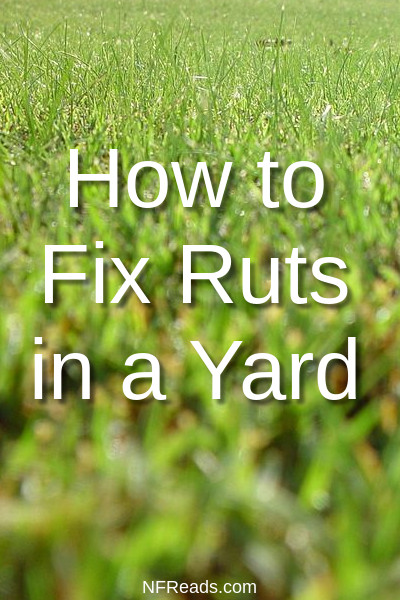
By Janine Soriano, Master of Science in Forestry, government environment researcher
After a long day’s work of mowing, you feel like you are well on your way to realizing your dream lawn. The next day, you see some marks on your turf – ruts, or tire tracks from being driven on. Freaking out won’t help, but the good news is that it can easily be fixed with minimal tools and equipment. Part of the cause may be poor lawn practices that need to be be unlearned – below are some fixing and prevention tips.
What are ruts and what causes it?
Ruts are any uneven grooves or damage on your lawn caused by environmental and mechanical factors:
- Change in seasons sometimes puts stress on the turfgrass
- Not enough time for leaf blades to recover as they are stepped on too frequently
- Waterlogging after frost
- Soil-boring critters or pets
- Improper application of cultural treatments, like mowing done incorrectly, putting pressure on the ground with heavy machinery, and major lawn activity while the soil is wet
Fortunately no matter how big or small the damage is, ruts can easily be fixed with the right timing and proper treatments.
How to fix them
Carefully assess the damage and what could have caused it – was it man-made (i.e. poor practice) or caused by nature? Is the rut deep or shallow? Next, prepare the materials needed to fill up these depressions.
If the cause is weather damage, cultural techniques will do the job. Drought-related problems are fixed by deeply watering the affected sods. When the soil is damp or oversaturated, avoid disturbing the lawn until it becomes dry. Puncture some holes near the rut to speed up drainage. When you suspect that irrigation might be the problem, fix the pipes that may have been the culprit of waterlogging.
For mechanical damage, filling the soil may not be required. It is recommended to use a garden rake to get the sods. Elevate the compacted soil an inch higher so that it can be flattened out later when the turf gets dry. For deep ruts, save the sods if some still remain. Put it aside to dry while treating the groove until it settles back to the original grade. On much deeper ruts or low spots, take up any remaining sods. Use a potting mix of soil, sand, and compost as fillers on the depressions. Lay the recovered sods on the treated spot or conduct overseeding to replenish ground cover. Remember to only fix ruts during the most active growing season for faster regeneration capacity.
How to prevent them
As saying goes, prevention is better than the cure. Lawnmowers can create ruts in various ways. To avoid it, do not mow on water-saturated spots. Doing so will save your grass from scalping against the mower blades. Change direction when mowing or striping as repeated activity compacts the soil and also reveals bare spots on the turf. Also, prevent spinning out the tires too much. If you think your mower spins or skids too much, have a technician check it for repairs. It is advised not to mow on the hottest time of the day because the tires can cause scorching on the leaf blades. In general, most ruts from mowers are easily prevented if mowing is done on the right turf conditions.
The next strategy is reducing any movement on the turf to minimize excessive soil compaction. Vehicles or other machinery should not cross the turf as much as possible. Letting the tires stay on the grass for a long time can trigger poor upward growth and chlorotic symptoms – it’s better to designate a dirt trail that leads to a parking space. Additionally, a concrete footpath can also help prevent excessive trampling by children and visitors.